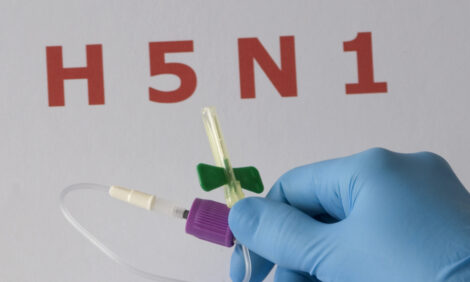



Dutch report shows less antibiotic resistance in farm animals
Resistance in broilers at lowest since 1998According to a news release from Wageningen University and Research, gut bacteria in farm animals have become increasingly less resistant to antibiotics over the past ten years in the Netherlands. This is one of the findings of the antibiotic resistance monitoring conducted by the National Institute for Public Health and the Environment (RIVM), Wageningen Food Safety Research (WFSR), Wageningen Bioveterinary Research (WBVR) and Utrecht University (UU). The result of their work is published in the NethMap/MARAN report.
Antibiotic resistance is monitored annually in farm animals. For this purpose, the Dutch Food and Consumer Product Safety Authority (NVWA) collects random samples from broilers, pigs and veal calves. These samples are analysed at WBVR to screen for antibiotic resistance. As head of the National Reference Laboratory, Kees Veldman (WBVR) is responsible for monitoring antibiotic resistance in farm animals. He is also key editor of the MARAN report.
“In addition to E. coli, our monitoring program also includes Salmonella and Campylobacter bacteria," he said. "These bacteria are important causes of food born infections and therefore important to monitor closely from a public health point of view.”
The monitoring shows that the antibiotic resistance of intestinal bacteria has decreased in all farm animals over the past ten years. “What is striking about the results of this report is that antibiotic resistance in broilers has fallen to the lowest level since 1998,” said Veldman.
This is in line with the further decline in antibiotic use in broilers. “Figures from the Netherlands Veterinary Medicines Institute show that antibiotic use in broilers has decreased by 31.7 percent in 2021 compared to the previous year," he added.
Whole genome sequencing
In addition to monitoring antibiotic resistance via phenotypical testing methods, whole genome sequencing was used. Information from this genetic analysis is reported to the European Food Safety Authority (EFSA). “The genetic analysis focuses in particular on the so-called extended spectrum beta-lactamase (ESBL) enzyme that some bacteria produce,” said Mike Brouwer. As a molecular biologist at WBVR, he is responsible for research into the genetic background of the antibiotic resistances found within the monitoring program.
Until recently, the resistance pattern of the ESBL-producing bacteria E. coli was measured with a susceptibility test. In the past year, this has been replaced for the first time by a new technique called 'whole genome sequencing'. Research shows that the genetic analysis provides the same information as the susceptibility tests.
“In addition, whole genome sequencing provides much more information, such as genetic relationships between bacteria," said Brouwer.
WBVR is one of the first European institutes to use whole genome sequencing in the monitoring of antibiotic resistance in farm animals. “The intention is that other European research institutes will also implement this methodology. As this is not yet standard practice, we will continue to use genetic analysis in addition to the susceptibility test," said Brouwer.
Less antibiotics were sold and used for farm animals in the Netherlands in 2021 compared to 2020. The sales of antibiotics for farm animals has fallen by 70.8% in comparison to the reference year 2009, according to a recent publication by the Netherlands Veterinary Medicines Institute (SDa). Since 2015, strict rules for the use of antibiotics in animal husbandry apply governing the use of antibiotics that are crucial to treat infections in humans. Such antibiotics should only be used in exceptional cases to combat infections in animals.n









